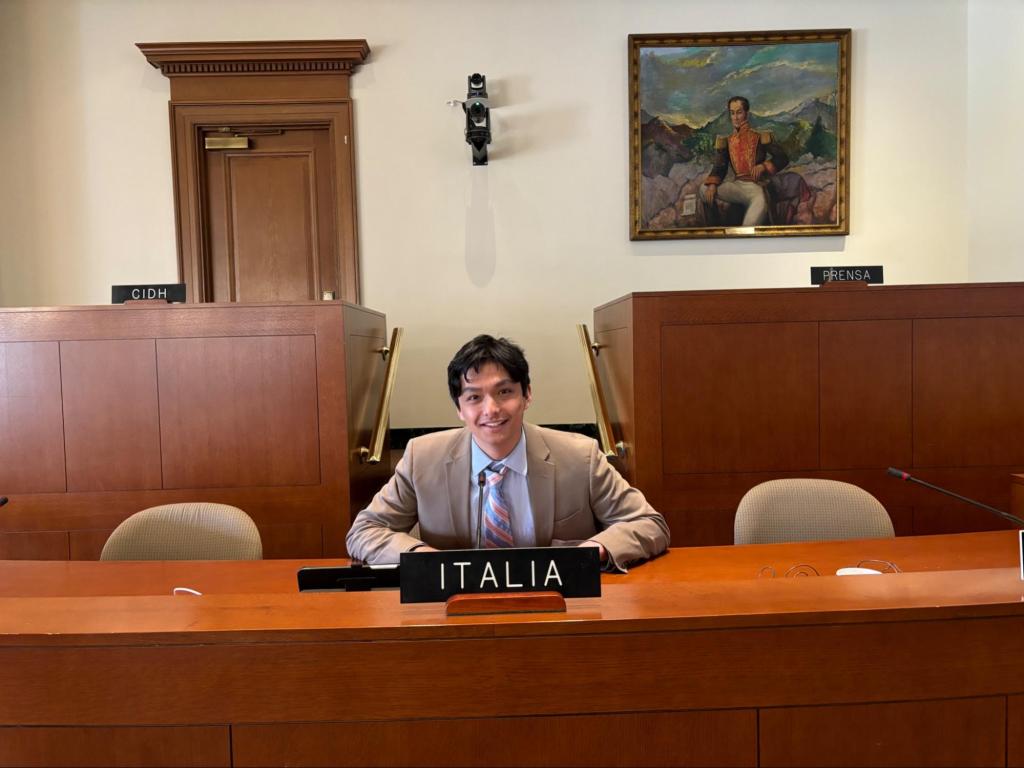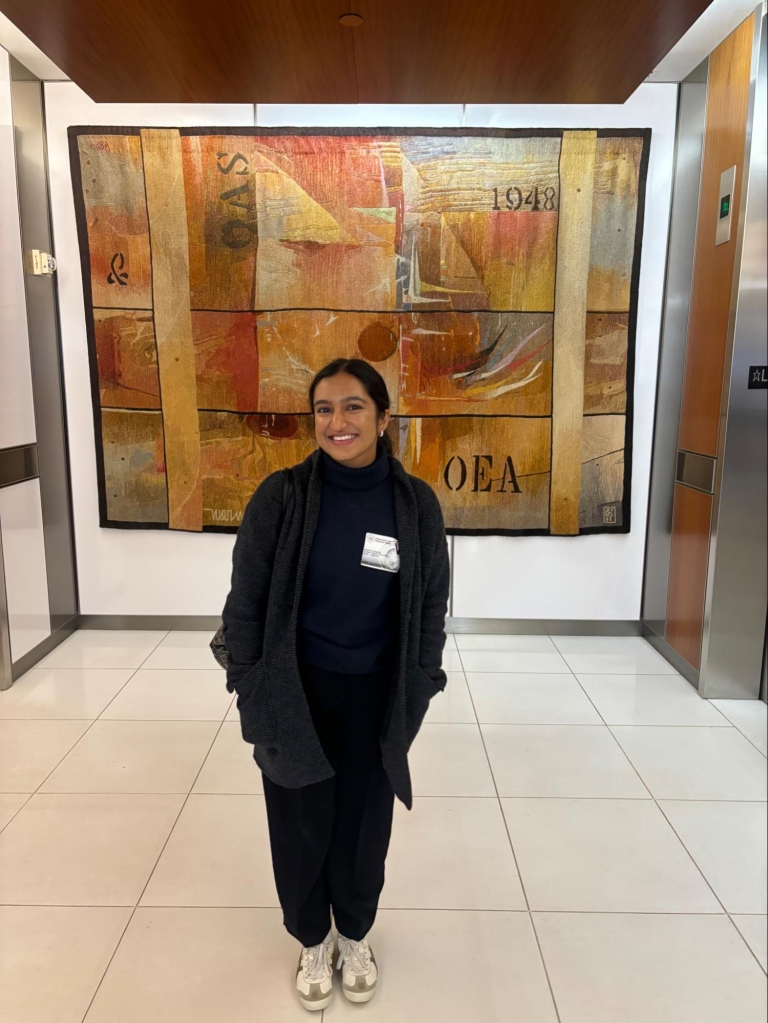“We of this Western Hemisphere, by movements such as that symbolized by this building, have taken great strides toward securing permanent peace among ourselves.” These were the words of Teddy Roosevelt dedicated to the Pan-American Union Building built in 1910. Only a few blocks from the White House, it now stands as the headquarters for the Organization of American States and was the setting for the BC Law Human Rights Elective and International Human Rights Practicum field trip in 2024.
The Pan American Union, a sort-of United Nations exclusively for the Americas, would transform into the Organization of American States in 1948. All 34 independent nations of the Americas hold membership within the organization and while it does not loom large in the American political imagination, it holds greater significance to Latin and Central American and Caribbean nations.
The four main pillars of the OAS mission are democracy, human rights, security, and development. On the morning of our visit, there was an ongoing working group on the crisis in Haiti. In recent years, the organization has fostered international cooperation to address mass migration, transnational organized crime, and human rights abuses. Notably, the OAS also monitors election integrity in member states, a mammoth endeavor in a year where more than 1/5th of the world will be eligible to vote.
To help address its human rights goals, the OAS created the Inter-American Commission on Human Rights in 1948. Its guiding instrument, the American Declaration on the Rights and Duties of Man, predates the Universal Declaration of Human rights, and forms a common understanding of human rights which must be respected by governing authorities. Fundamentally, the framework recognizes that large-scale problems cannot be confined to or remedied by a single nation acting solely in their national interest.
Field Trip
The entire trip would not have gone so smoothly without the support of the BC Center for Human Rights and International Justice (thank you Tim). They fronted $350 in travel costs and even helped arrange transportation, meaning that there is a strong likelihood you’ll be flying with your classmates or new friends in the International Human Rights Practicum.
When you arrive at the Pan-American Union Building, you’re met with a large statue of Queen Isabella I, parking spaces labeled by nation, and a grand structure whose outside bears strong resemblance from Greco-Roman designs. Inside, there is a beautiful courtyard boasting a fountain, foliage, and Meso-American art drawn into the floor. Fortunately for us, the Working Group on Haiti finished and we were able to enter the deliberation room. It was a great joy to see where the magic happens and pretend, even for a moment, to be a representative.
The field trip was refreshing for two main reasons. First, it provided a great setting to broaden our horizons–whether that be mingling with classmates you haven’t had enough facetime with, increasing our knowledge of opportunities available to fresh–faced law students, or simply seeing a different city with a unique character. DC is a unique place. Its design is deferential to the monuments, it is pedestrian friendly, and it embraces its identity as a political and historical hub for the nation’s history. The metro system is simple, straightforward, and reliable, providing a great resource for those who do not want to or cannot drive. Secondly, an international law oriented trip is a breath of fresh air after almost two semesters of doctrinal classes. I did not hear “The Constitution” said once, but I did hear many conversations on international relations, social narratives of different nations, and history which goes beyond the American story. We can hear other people’s stories from beyond our nation’s borders and see how they articulate their worldview and we ourselves come to an understanding of how our own perceptions are shaped by our environment and where those perceptions land in the broad spectrum of stories in this world.
Finally, a field trip simply helps build stronger bonds. You are experiencing something that is unique and exclusive together. You get to sit down and share stories of your life outside of the law. You have ample opportunity to meet up in the evening for nightlife or even have a simple brunch in a new city. Overall, if you get the opportunity to travel in law school, seriously consider it.



Alex Mostaghimi is a first-year student at BC Law. Contact him at mostagha@bc.edu.